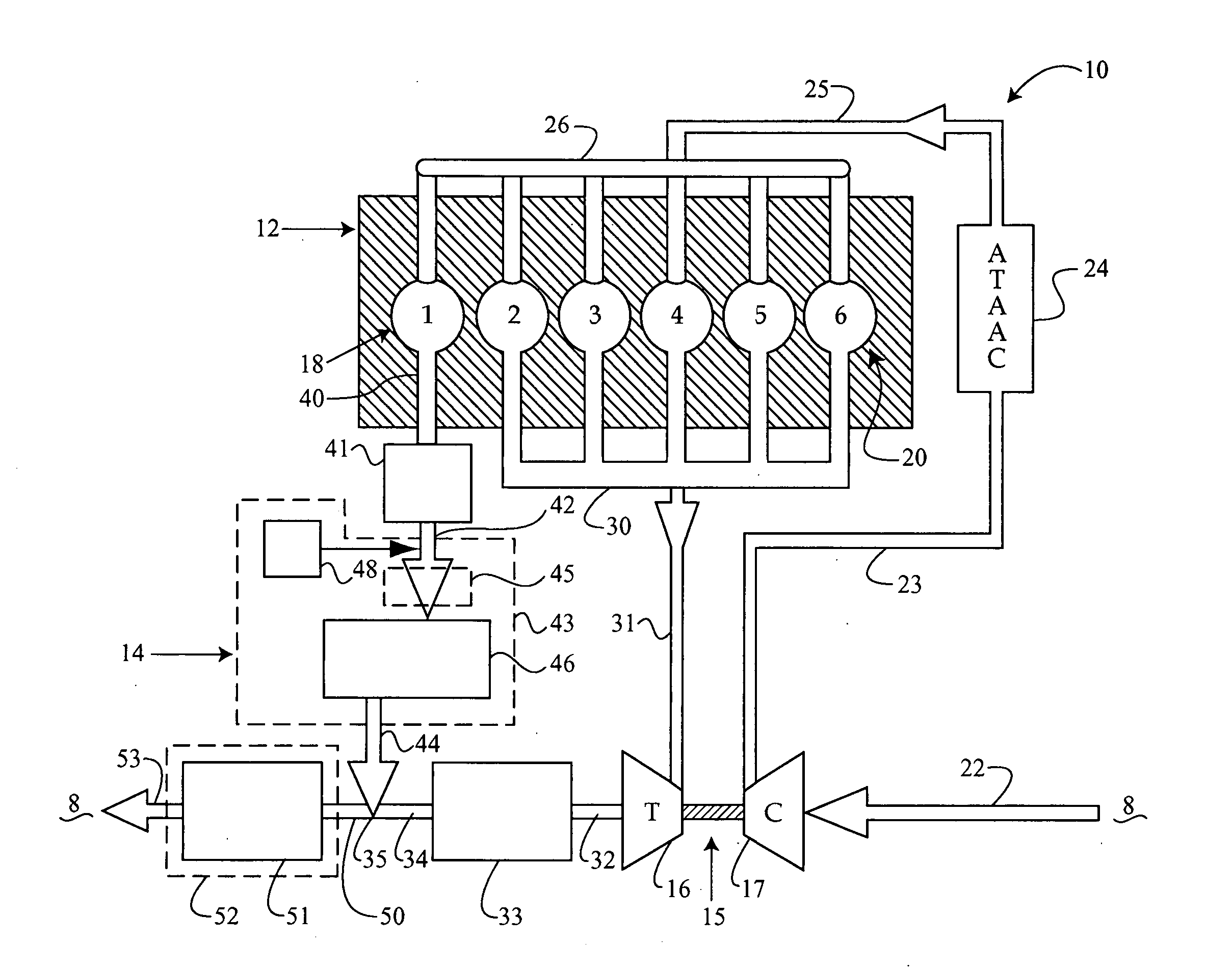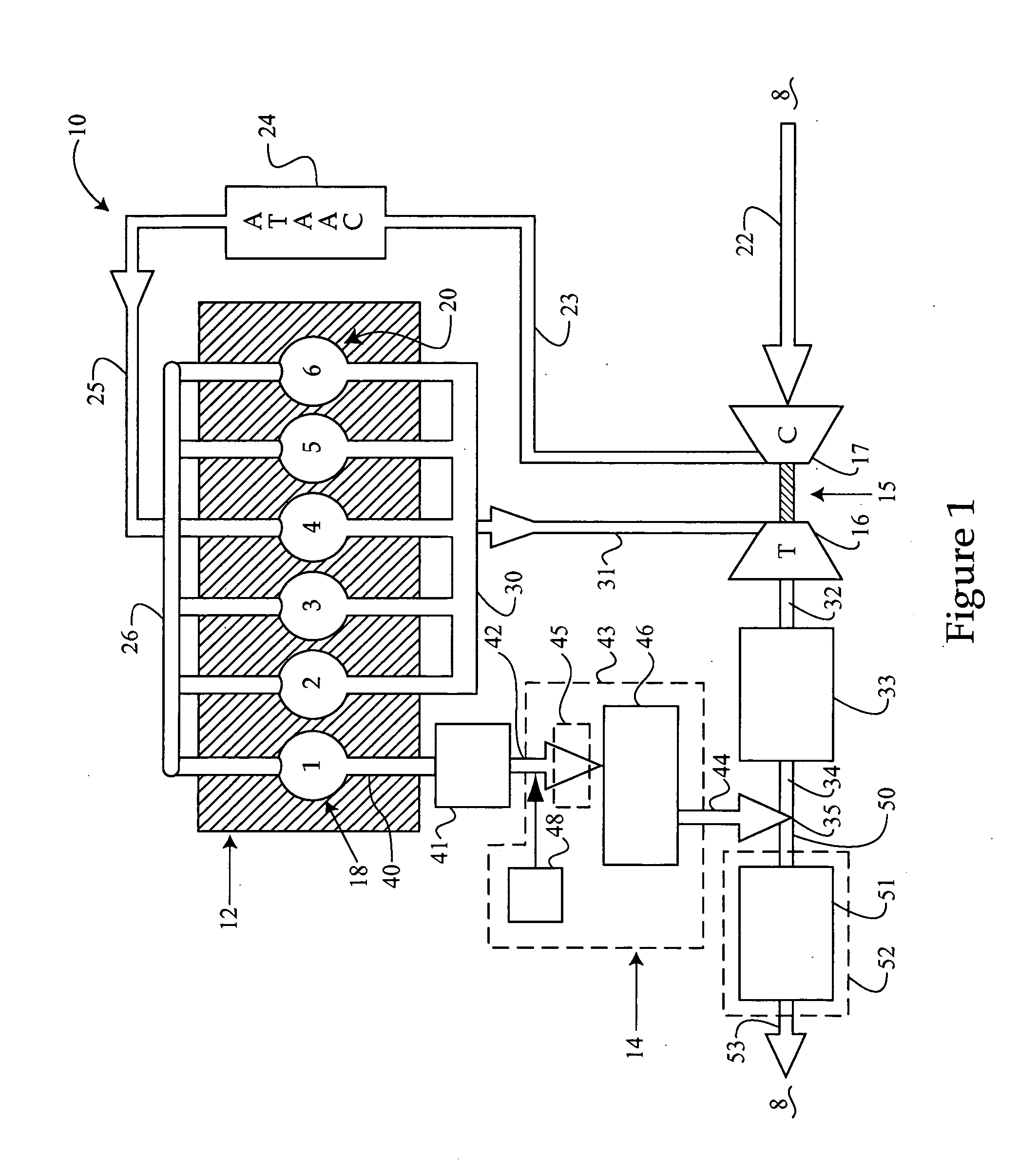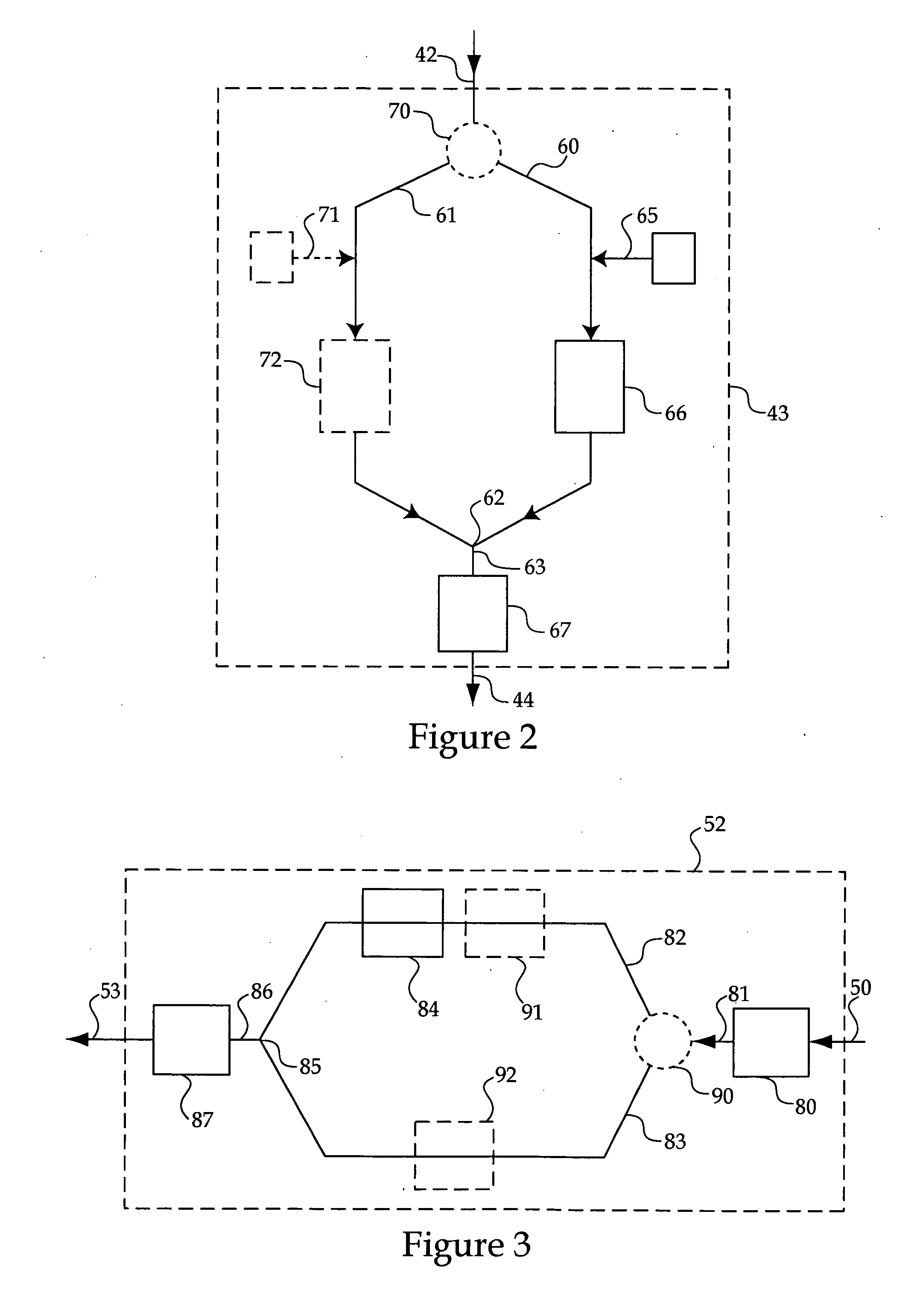Engine system arrangement with on-board ammonia production and exhaust after treatment system
a technology of exhaust treatment and engine system, which is applied in the direction of engines, machines/engines, mechanical equipment, etc., can solve the problems of unsatisfactory emissions of particulate matter and nox, the inability to develop a fossil fuel combustion strategy that completely avoids the production of undesirable emissions, and the inability to achieve aftertreatmen
- Summary
- Abstract
- Description
- Claims
- Application Information
AI Technical Summary
Benefits of technology
Problems solved by technology
Method used
Image
Examples
Embodiment Construction
[0012] Referring to FIG. 1, an engine system 10 includes an air intake 22 that receives air from atmosphere 8 and vents exhaust back to atmosphere 8 via a tailpipe 53. Engine system 10 includes a first combustion chamber group 18 and a second combustion group 20. In the illustrated example, the first and second combustion chamber groups 18, 20 are part of a single engine 12. However, those skilled in the art will appreciate that engine system 10 could include two or more separate engines where the first and second combustion chamber groups are located in the respective engines. In the illustrated example, the second combustion chamber group 20 is primarily responsible for producing the bulk of the power output of the engine, and the first combustion group 18 is generally responsible for creating excessive NOx for conversion to ammonia. The ammonia is later reacted with NOx produced by the second combustion group 20 to produce nitrogen and water that is vented to atmosphere 8 via tai...
PUM
 Login to View More
Login to View More Abstract
Description
Claims
Application Information
 Login to View More
Login to View More - R&D
- Intellectual Property
- Life Sciences
- Materials
- Tech Scout
- Unparalleled Data Quality
- Higher Quality Content
- 60% Fewer Hallucinations
Browse by: Latest US Patents, China's latest patents, Technical Efficacy Thesaurus, Application Domain, Technology Topic, Popular Technical Reports.
© 2025 PatSnap. All rights reserved.Legal|Privacy policy|Modern Slavery Act Transparency Statement|Sitemap|About US| Contact US: help@patsnap.com



